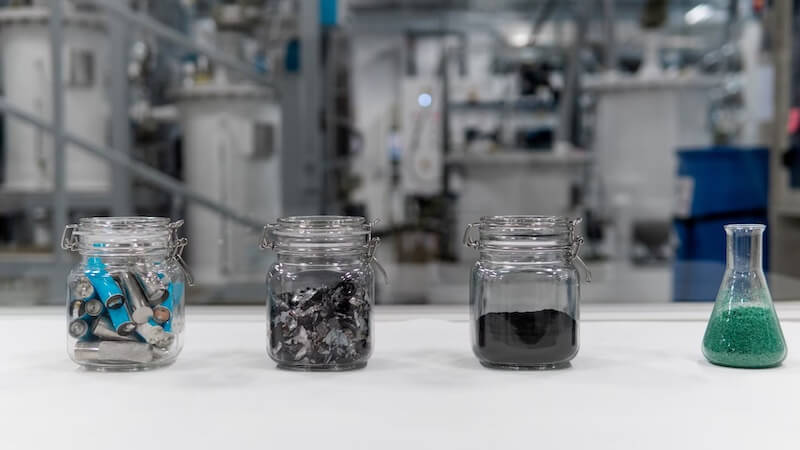How to choose the right solar panel for balcony power plants? [Anzeige]
How should we go about buying a new solar panel, what should we pay attention to? If you have decided to build a solar system using solar panels but do not know which criteria to evaluate, our article on choosing a solar panel in 7 points is for you. The first thing to emphasize is that the solar panel is a long-term investment. Therefore, there are some very important parameters that you should pay attention to before the price.
Contents
1.Solar panel prices
Solar panel prices are determined by the wattage, dimensions, brand, quality of materials, warranty period, and certification of the panel.
The first thing to consider when buying a solar panel is the price. Because an option that exceeds your budget doesn’t make sense, even if it’s better. However, it would not be wise to buy a panel based on price alone. Expecting high performance by buying the cheapest panel shouldn’t be the right approach.
Considering that you are buying a product that has been actively working for more than 30 years, considering price as a basic parameter can be misleading. We recommend that you go for the panels that will last the longest and offer the best possible performance, rather than the cheapest.
Long story short, price is an important variable, but when viewed as the only variable, you may encounter sad results.
2. Quality of the solar module
One of the most important criteria when choosing a solar module is the quality. The quality of solar panels is determined by the production process and the materials used for construction. There are dozens of different manufacturers that bring different products to the market in terms of quality, price and efficiency.
Premium manufacturers at the forefront of quality work with vertical integration, planning and controlling all phases of the production process, from cell manufacturing to assembly. It conducts R&D studies to produce better quality panels.
Some manufacturers only do the assembly. You periodically buy all the components from different manufacturers and merge them together. They produce based on human labor rather than automation. As a result, they bring products onto the market that are relatively attractively priced, but whose quality is questionable. Most importantly, the panels they produce may differ even among themselves. In other words, it’s common for there to be inconsistencies between the products they make.
Then what to do? Before buying a panel, it makes your work easier to find out about the brand, properties and manufacturer. Since you’re making a long-term investment, it shouldn’t be hard to do some research!
Think of it this way: When you buy a car, you think for days. Because you expect long driving times, transmission technology, breakdown service, service, etc. You research a number of variables for a long time. Sometimes the brand and quality are good but the service is lacking. Sometimes brand and quality are optimal, but the service support makes your decision easier. In short, when buying a car you try to make the right choice that fits your budget.
Panel selection is no different or even more important. Because we’re talking about a product that will serve you longer than the car you buy and save you money.
3. Energy efficiency
The efficiency of the solar module is the conversion rate of radiation into electrical energy. In other words, the efficiency determines how much electricity the panel produces. There is a direct correlation between efficiency and price. The higher the yield, the higher the price.
However, the most efficient panel does not mean the best and smoothest panel. It is enough to determine your needs and buy a panel that meets these requirements. For example, Ferrari is faster than many cars on the market, but it’s not a good choice if you use it to commute or take the kids to school.
In short, if you are doing solar panel calculations and research for the home, a panel with optimal efficiency is sufficient. Quality is often a more important variable than productivity.
4. Solar panel temperature coefficient
The temperature coefficient of the solar module is an important selection criterion. It is the value that is written as “-0.28%/°C”, “-0.40%/°C”, a value that indicates how high the Module performance is affected by temperature.
As the panels generate electricity, part of the radiation coming from the sun is converted into electrical energy and part into heat. Therefore, the plates inevitably get hot. While the current (I) increases as the cells heat up, the voltage value (V) decreases. The voltage drop has a negative effect on the output power and the panel generates less power.
In short, the closer the solar panel’s temperature coefficient is to zero, the better.
5. Warranty periods for solar modules
The warranty period reveals how much confidence the manufacturer has in its product. There are two types of guarantees: product guarantee and performance guarantee. Both warranty periods are important, and the longer the better. Most panels on the market are sold with a 25-year performance guarantee (which makes sense when the manufacturer is still on the market after 25 years).
The warranty period is important when choosing a panel and the longer the better. If you buy a panel with a 10-year warranty while there are panels with a 25-year warranty, you will likely run into problems that will make your decision questionable in the short and medium term.
However, the issue of guarantee is often twofold. If you are not careful, you will no longer have any rights in the future. If you are unsure of the manufacturer, the most tedious but most accurate way to verify the warranty terms is to consult the warranty terms file. Statements such as “25-year performance guarantee, but…” should be checked very carefully. The devil is in the details.
Solar modules suffer a loss of 2% to 3% shortly after commissioning. That is normal. It is important to be able to predict how high the loss will be in a certain period of time. These predictions are included in the warranty documentation. It is important to check these values in order not to have intentional wishful thinking.
Whether premium or optimal solution, it is a fact that losses of 0.6% – 0.8% occur with panels at certain intervals. In short, loss is a normal situation, but what percentage it starts at and what percentage it decreases at the end of 25 years is very, very important. The less the loss, the better. Therefore, pay attention to how much damage you suffer during this period, as well as the duration of the performance guarantee.
6. Solar panel performance
If we understand the issue of panel performance correctly, it will be easier to choose the solar panel system. Wp is the abbreviation for “Watt Peak” value. Wm, which has the same meaning, is short for “Watt Maximum” value. It expresses the maximum power that the solar panel can generate under optimal conditions. The reason for specifying the maximum value is that the PV module produces a variable amount of energy depending on the angle and intensity of the radiation received.
For example, a 325Wp solar panel generates 325W of electrical energy from solar energy at noon when the sun’s rays fall at a suitable angle. While the power increases from morning to noon, there is a decreasing curve from noon to evening. In short, the amount of energy that the sun can produce at its zenith hour is given by Wp.
There is a direct correlation between solar panel performance and price. The higher the panel performance, the higher the price. Solar panels are made of semiconductor material that converts light into electricity to generate electricity from solar energy. The most commonly used semiconductor material in panel production is silicon.
7. Cell type of the solar module
The most common types of solar cells on the market are polycrystalline and monocrystalline cells. Both monocrystalline and polycrystalline solar modules are made from silicon wafers. In the manufacture of the above types of panels, silicon plates are laid horizontally and vertically on the surface, protected by tempered glass and covered with a frame, giving them a rectangular appearance as we know it.
Polycrystalline and monocrystalline solar modules
Although both types of panels are made of silicone, they differ in the composition of the silicone. Monocrystalline solar cells are made by cutting solid and pure silicon. Polycrystalline solar cells, on the other hand, are created by cutting segmented silicon crystals together. In short, one has a mono-cell structure while the other has a poly/poly multi-cell structure.
Thin film (flexible) solar panels
Unlike mono- and polycrystalline solar panels, flexible thin-film panels are made from a variety of materials: cadmium telluride (CdTe), amorphous silicon, copper indium gallium selenide (CIGS), and gallium arsenide (GaAs).
The most common thin film material is cadmium teluride (CdTe). The production consists of applying a CdTe layer on a transparent conductive surface and a glass surface on top of this layer.
Another thin film panel material on the market is amorphous silicon (a-Si), which is similar in composition to monocrystalline and polycrystalline panels. The main difference with mono and polycrystalline solar panels is that they are not made from solid silicon material. The production consists of applying non-crystalline silicon to a glass, plastic or metal surface.
Another popular material for flexible thin-film boards is copper indium gallium selenide (CIGS). It is made by placing copper indium gallium and selenide elements between two layers (e.g. glass, plastic, aluminum or steel) and coating this layer with electrodes that allow electric current.
BLUETTI has two exciting modules that you can use for your balcony power plant. For one thing foldable solar panel BLUETTI PV200 with a power of 200W.
BLUETTI
Or that foldable solar panel BLUETTI PV350, which even has an output of 350W per panel. This gives you an optimal basis for your own balcony power plant at home or when you are out and about.

BLUETTI
You can find a large selection of other solar module products on the BLUETTI DE website.
Convince yourself now
![How to choose the right solar panel for balcony power plants? [Anzeige]](https://www.basicthinking.de/blog/wp-content/uploads/2023/06/bluetto-solarpanel.png)


